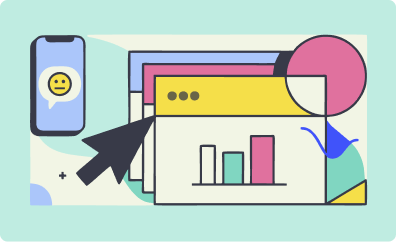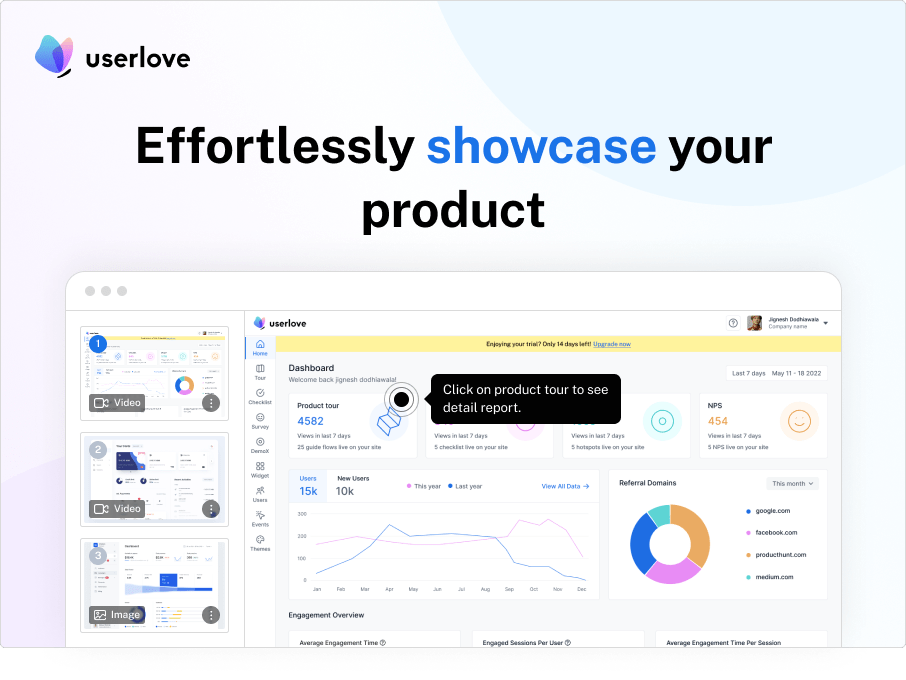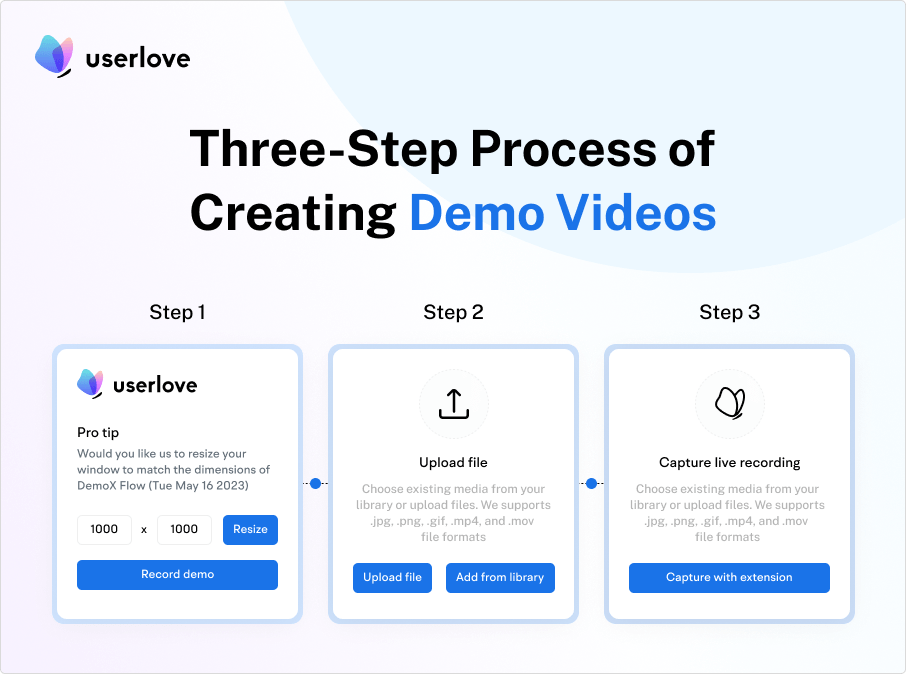- ProductsUserloveUserlove simplifies user onboarding, boosts engagement and accelerates adoption without requiring any coding skills.FEATURESSegmentationOptimizing user engagement through precise segmentation.Tooltip & HotspotHighlight key areas and provide specific information.TemplatesReady to use professional templates for quick start.ThemesCreate fantastic, personalized experiences that work well with the user interface of your product.EventsGenerate visualizations of data and events without coding.
- Use Cases
- ResourcesRESOURCES
- Pricing
- Contact Us
Personalized Onboarding
User onboarding guide for SAAS businesses
Creating a Personalized User Onboarding Experience for your SAAS Business
User onboarding is an essential process for any Software-as-a-Service (SAAS) business. It is the process of guiding new users through your product, ensuring they understand how it works and how it can benefit them. A well-designed user onboarding experience can lead to higher user engagement, customer retention, and ultimately, increased revenue. In this blog post, we’ll discuss the importance of user onboarding and provide tips for creating a personalized onboarding experience that will delight your users.
Why is User Onboarding Important?
User onboarding is crucial for the success of your SAAS business for several reasons:
It helps users to understand your product: SAAS products can be complex, and new users may feel overwhelmed. A well-designed user onboarding experience can help users understand how to use your product, its features, and how it can benefit them.
It increases user engagement: An engaging user onboarding experience can lead to increased user engagement. By showing users how to use your product effectively, they will be more likely to continue using it.
It improves customer retention: A personalized onboarding experience can help users understand how your product solves their problems, leading to higher customer retention rates.
Tips for Creating a Personalized User Onboarding Experience
Identify Your Users’ Needs: The first step in creating a personalized user onboarding experience is to identify your users’ needs. What problem does your product solve, and how can it benefit your users? Use this information to create user personas and tailor your onboarding experience to their specific needs.
Keep It Simple: SAAS products can be complex, but your onboarding experience should be simple and easy to follow. Use clear language, and break the onboarding process down into manageable steps.
Use Interactive Tutorials: Interactive tutorials can be a powerful tool in creating an engaging user onboarding experience. Use them to show users how to use your product’s key features and to help them get started.
Provide Contextual Help: Provide contextual help throughout your product, so users can get the help they need when they need it. Use tooltips, pop-ups, and other in-app messaging to guide users through your product.
Measure Your Success: Finally, it’s essential to measure the success of your user onboarding experience. Use analytics tools to track user engagement, retention, and conversion rates. Use this information to optimize your onboarding process continually.







